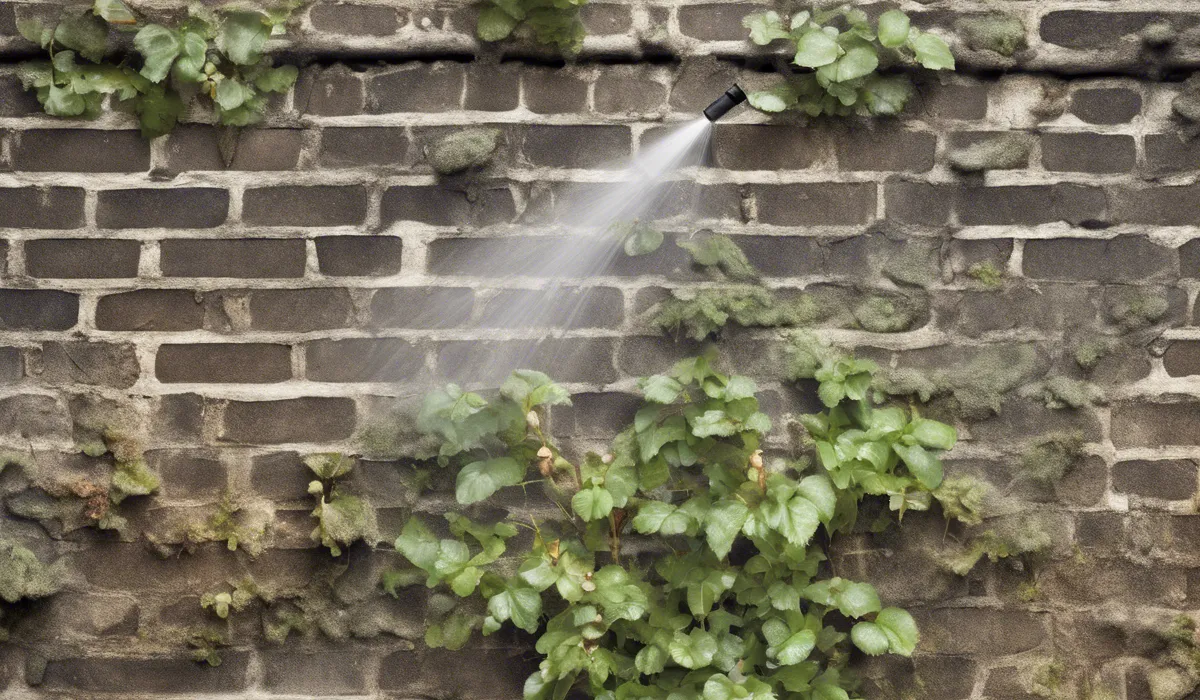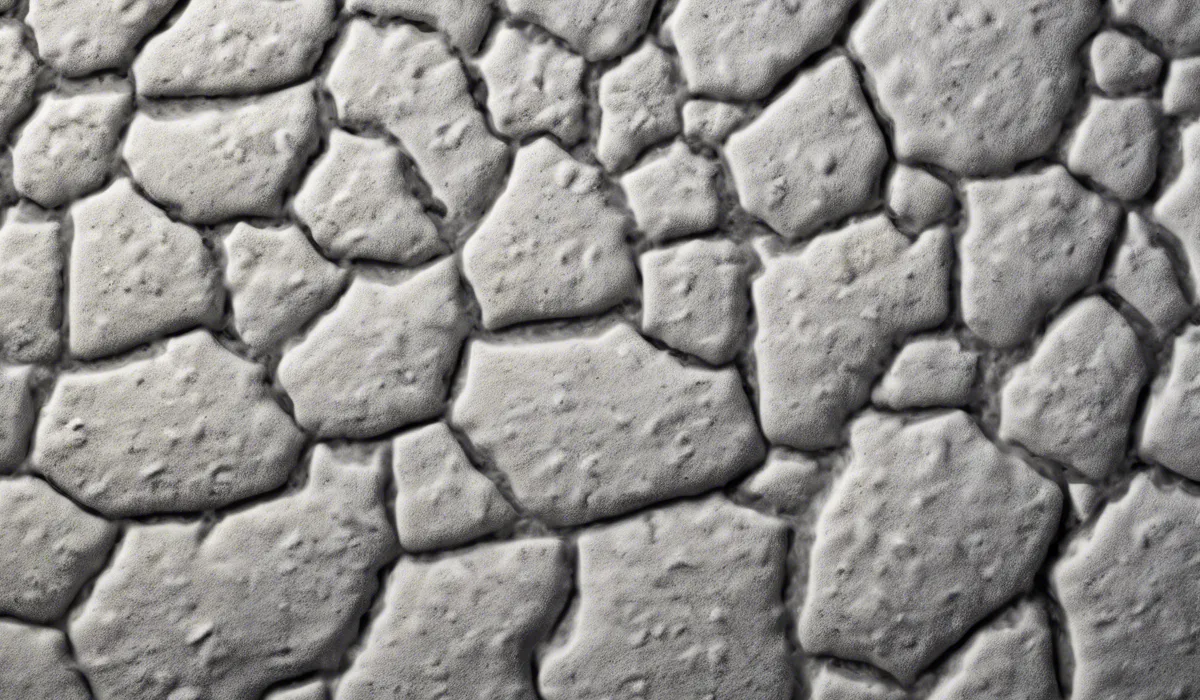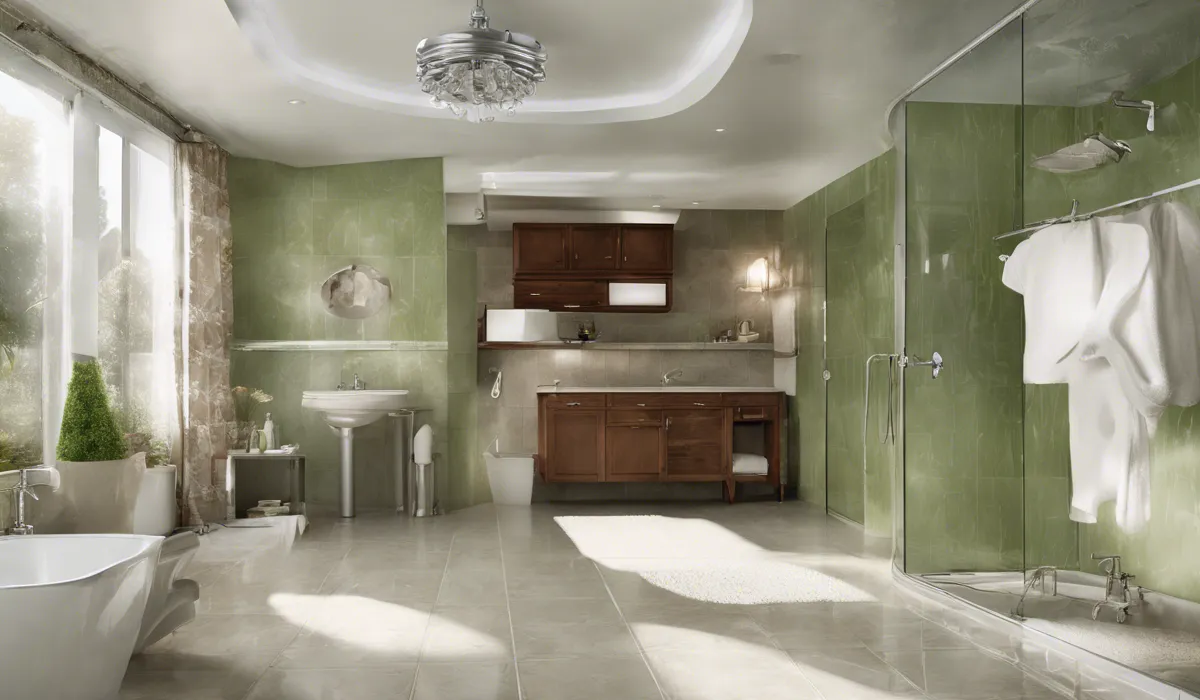To treat mildew, spray a mixture of water and white vinegar, using equal parts. For stubborn mildew, add a teaspoon of baking soda to the solution. Apply directly to the affected area, let sit, and then scrub gently.
Understanding Mildew and Its Causes

Defining Mildew
Mildew is a type of fungus that presents itself as a thin, superficial layer of growth. Unlike its deeper-rooted cousin, mold, mildew typically grows on damp surfaces and appears powdery or fluffy.
It is often white, yellow, or gray in color and can produce a musty odor.
Mildew vs. Mold
While mildew and mold are both fungi, they are not the same. Mold is usually black or green and grows within surfaces like walls or under carpets.
It can be more challenging to remove and often causes more severe damage to the infested material. Mildew, on the other hand, remains on the surface and is easier to treat.
Where Mildew Thrives?
Common areas prone to mildew growth include bathrooms, kitchens, basements, and any other place with moisture, limited airflow, and organic materials.
Surfaces like shower curtains, window sills, and wallpaper are typical hotspots for this unwanted guest.
Contributing Factors to Mildew Growth
Mildew loves moisture and warmth. Poor ventilation, high humidity, and lack of natural light create the perfect environment for mildew to flourish.
Moreover, an excess of organic materials, such as wood or cotton, can feed mildew spores, allowing them to spread rapidly.
Health and Property Risks
Exposure to mildew can lead to health issues such as respiratory problems, headaches, and allergy symptoms.
From a property standpoint, mildew can cause unsightly stains and damage to home furnishings, walls, and ceilings, potentially leading to costly repairs.
Natural and Chemical Solutions for Mildew Removal

Safety First: Protective Gear
When dealing with chemicals or even natural solutions, it’s essential to protect yourself. Wear gloves, goggles, and masks to avoid direct contact with substances that may irritate your skin or respiratory system.
Natural Remedies for Mildew
Natural solutions are often preferred for their environmental friendliness and safety around children and pets.
A simple yet effective mixture is equal parts water and white vinegar, which can be sprayed directly on mildew.
For tougher spots, add a teaspoon of baking soda to enhance the solution’s potency.
Chemical Solutions for Stubborn Mildew
If natural solutions don’t work, you may turn to chemical-based options. A popular choice is a chlorine bleach solution diluted with water.
Commercial mildew removers are also available and often contain potent ingredients designed to kill mildew quickly.
Natural vs. Chemical: Which to Choose?
Natural solutions are safer for the environment and human health but may require more elbow grease and repeated applications.
Chemical removers are more aggressive and can tackle severe mildew problems effectively, but they come with higher health risks and environmental concerns.
Preventive Measures and Best Practices

Establishing a Cleaning Routine
Regular cleaning is crucial in preventing mildew buildup. Wiping down damp areas and removing any signs of mildew before it spreads can save you from extensive cleaning down the line.
Keeping Air Flowing
Good ventilation is essential for preventing mildew. Use fans and open windows to keep air moving and reduce moisture levels.
Dehumidifiers can also help maintain a dry environment, particularly in naturally damp areas like basements.
Mildew-Resistant Products
Today, many paints and products are designed to resist mildew growth. Using these in areas prone to moisture can provide an extra layer of protection against fungal invasions.
Regular Inspections
Periodically inspect your home, especially the usual mildew hotspots. Catching mildew early can prevent it from becoming a larger problem.
Maintain a Mildew-Free Home
Simple actions like keeping towels dry, fixing leaks promptly, and avoiding the accumulation of clutter can significantly decrease the likelihood of mildew growth.
Staying vigilant and proactive is key to maintaining a healthy, mildew-free living space.
FAQs About Treating Mildew
What is the basic spray mixture recommended for treating mildew?
The basic spray mixture for treating mildew is a solution of water and white vinegar in equal parts.
Can I use baking soda to treat stubborn mildew?
Yes, for stubborn mildew, you can add a teaspoon of baking soda to the water and vinegar solution.
How should I apply the vinegar and baking soda solution to mildew?
Apply the solution directly to the affected area, let it sit for a while, and then scrub gently.
Do I need to rinse the area after treating it with the vinegar solution?
It’s not mandatory to rinse after treating the area, but you can rinse with water if you wish to remove any residual smell or substance.
What is the best way to treat a large area of mildew?
For large areas, you can scale up the mixture of water and vinegar, and if necessary, add more baking soda. Spray generously, let sit, and scrub the area in sections.
Final Thoughts
To combat mildew, create a spray using a 1:1 ratio of water to white vinegar. For tougher mildew, enhance the solution with a teaspoon of baking soda.
Spray this mixture directly onto the mildew, allow it to penetrate for a short period, and then scrub the area gently to remove the growth.
